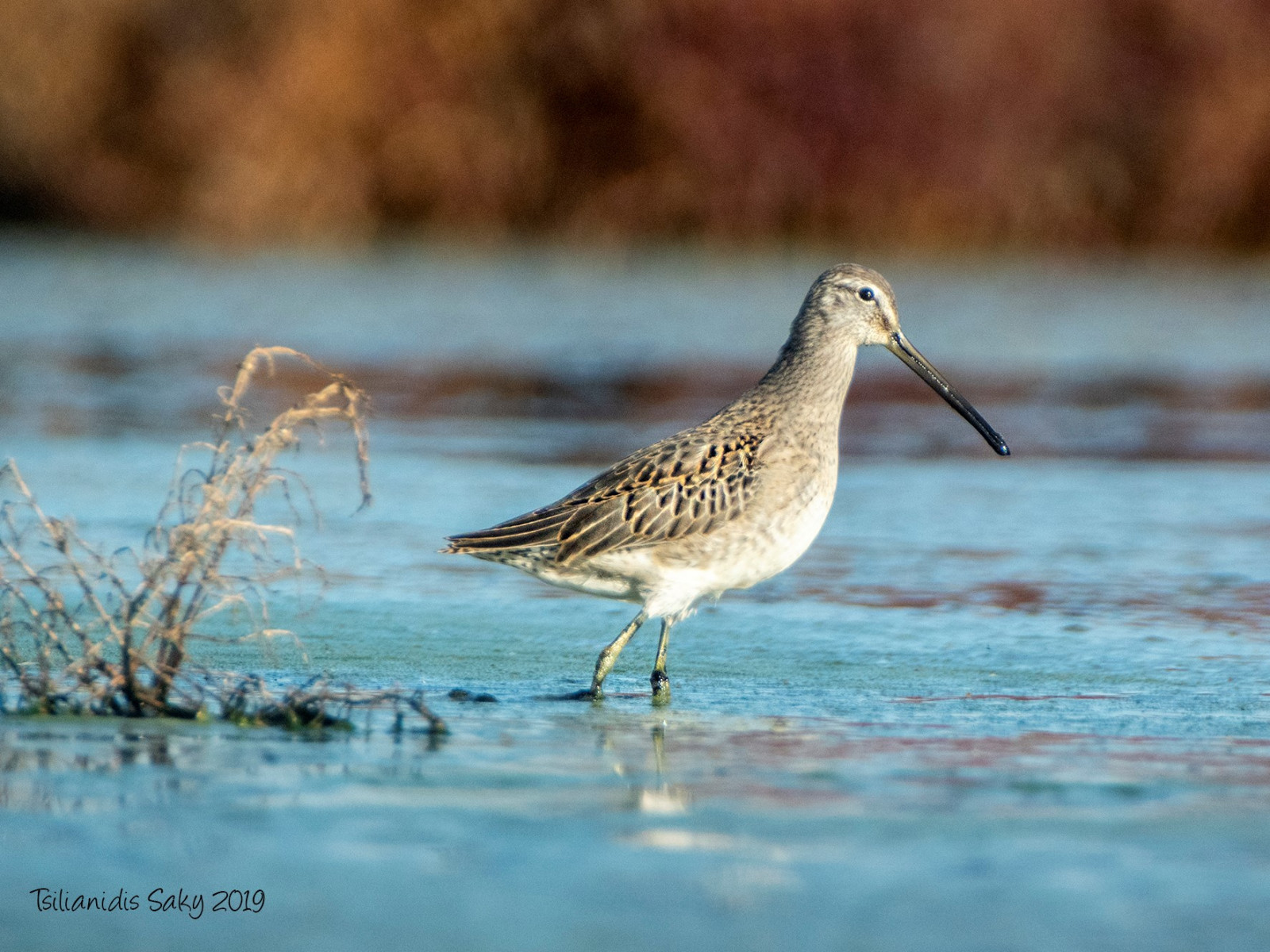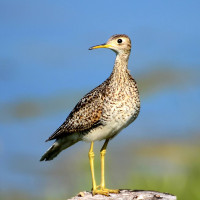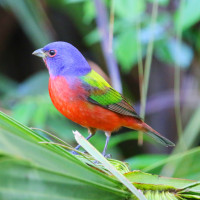Beschreibung
Bald Knob National Wildlife Refuge was established in 1993 to protect and provide feeding and resting areas for migratory waterfowl. Birders flock there, especially in the fall, for shorebirds, waterfowl, and waders. In winter the area is home to large concentrations of many species of ducks and geese. The refuge annually hosts the largest populations of wintering Northern Pintail in the state and is a crucial staging area for Pintail migrating to the coastal areas of Louisiana and eastern Texas.
Bald Knob NWR has cypress tupelo brakes, bottomland hardwood forests with wetlands and sloughs (managed to simulate natural flooding and provide habitat for waterfowl and shorebirds), oxbow lakes, agricultural lands, reforested areas and the Little Red River. Unlike many wildlife refuges, Bald Knob NWR includes cropland that continues to be farmed. Of the 15,000 acres of the refuge, 9,000 are cropland. But much of the crop is left unharvested to feed and shelter migratory birds and Arkansan wildlife. The irrigation system is also utilized to provide habitat for wading birds, mudflats for shorebirds, and to simulate natural flooding of hardwood forests.
The refuge boasts a total of over 290 confirmed bird species over time. Any time of year is good but typically spring and late summer/early fall offer the best times to search for shorebirds, waders and warblers. By late summer, large numbers of herons, egrets and other waders arrive. One of the most sought-after late summer visitors is the Roseate Spoonbill. Ducks begin arriving late August, then sparrows in October, joined by an abundance of geese by November, all continuing at the refuge through winter.
Details
Zugang
Bald Knob NWR is located about two miles south of the small town of Bald Knob in White County, Arkansas. The Refuge operates in part as a waterfowl sanctuary in the winter and provides an agricultural opportunity for growing rice and soybeans. Birders have the chance to walk or drive to the areas of most significant interest. Most of the time refuge roads are open to the general public. However, roads may be closed any time conditions or other administrative needs warrant. A locked gate or other barriers, road closed sign, or no vehicle sign means the road is closed to ALL vehicle travel, but not to foot travel unless signed otherwise.
You can park on designated parking spots or park on the side of the road. Please leave room for other vehicles to pass. Be aware of the possibility of snakes as you exit your car. Cottonmouths (water moccasins) are prevalent throughout the refuge. Restrooms are in the Refuge Headquartes (see map), which is open on weekdays.
Some of the best birding is along Coal Chute Road (1) and Huntsman Road (2). Birch Pond (3) is good for Black-crowned Night Heron and potentially other unusual waders, and the road to this location is active with warblers, flycatchers and other passerines. It is a wet swampy area on the left side of the road that has cypress trees emerging. Ditch 13 (4) is another road of interest and runs along the eastern edge of the refuge. The road is worth checking for migrants, raptors and wintering waterfowl. Some sections of Ditch 13 are closed during the winter season, but the section from Collins Road to Frackin Road remains open year-round. In the spring, it is possible to find Yellow-crowned Night Heron, American Bittern and Painted Bunting along Ditch 13.
Terrain und Habitat
Wald , Vereinzelte Bäume und Büsche , Feuchtgebiet , LandwirtschaftBedingungen
Offene Landschaft , SumpfigRundweg
JaIst ein Spektiv nützlich?
Möglicherweise hilfreichGute Beobachtungszeit
GanzjährigBeste Beobachtungszeit
Winter , Herbstzug , FrühjahrszugRoute
asphaltierte Straße , unbefestigte StraßeSchwierigkeitsgrad der Tour
EinfachErreichbarkeit
zu Fuß , Fahrrad , AutoBeobachtungshütten oder -türme
JaZusätzliche Informationen
Note: Some parts of the Bald Knob NRW are closed at certain times of the year. Check the official website before a visit. See the link below.



